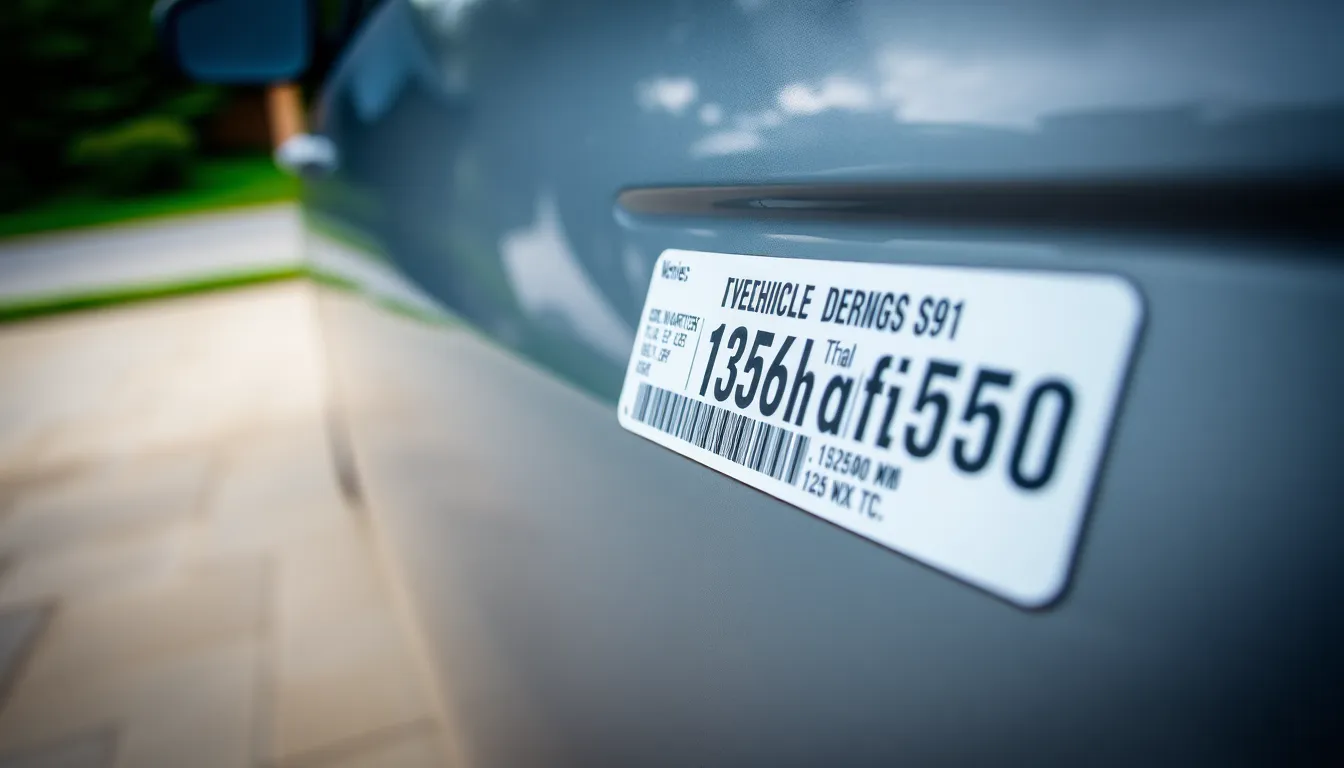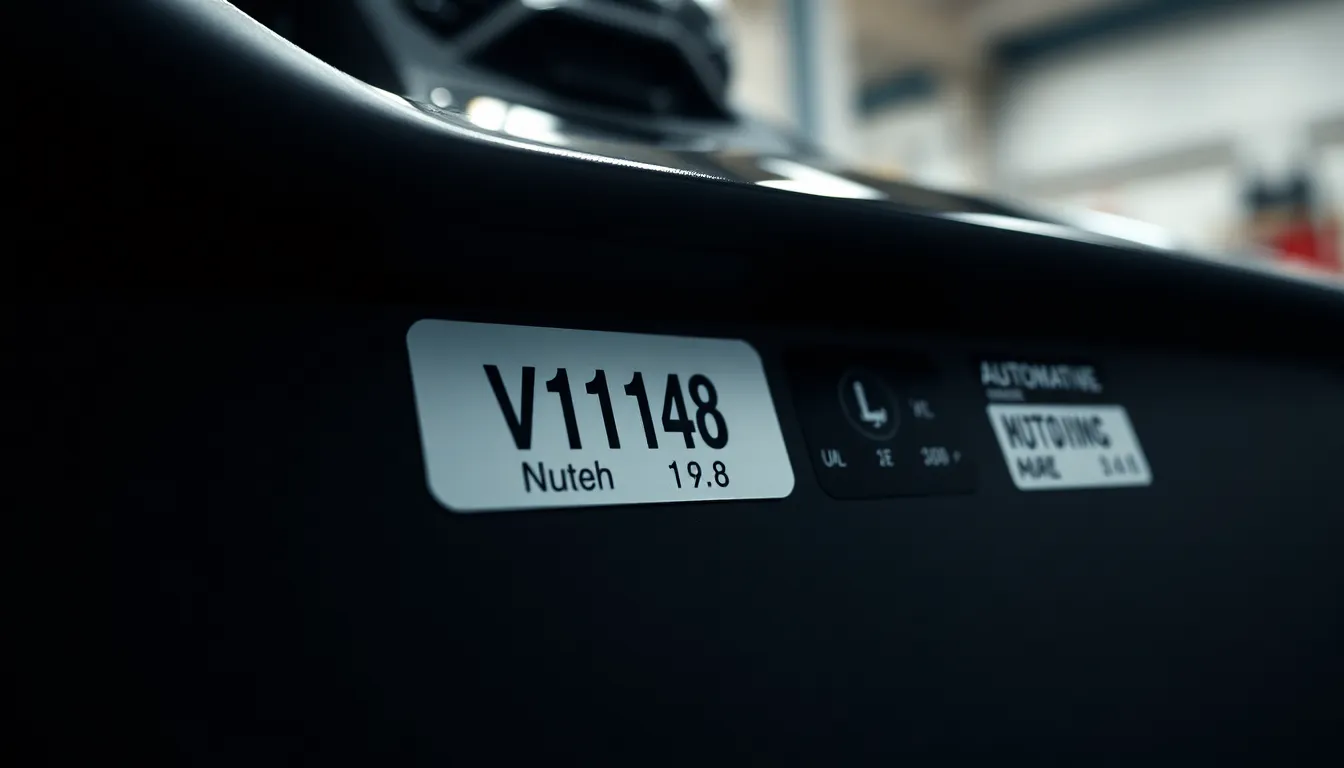We’ve all been there – standing in an auto parts store or browsing online listings wondering exactly which trim level our car has. Whether you’re shopping for replacement parts buying accessories or simply curious about your vehicle’s specifications knowing your car’s trim is essential for making informed decisions.
Your car’s trim level determines everything from engine options and interior features to safety equipment and technology packages. Without this crucial information you might end up purchasing incompatible parts or missing out on features you didn’t know you had. The good news? We’ll show you several foolproof methods to identify your exact trim level.
From checking your VIN number to examining exact badges and features we’ll walk you through the most reliable ways to determine your car’s trim. By the end of this guide you’ll have the confidence to identify your vehicle’s exact specifications and make smarter automotive decisions.
What Is Car Trim and Why Does It Matter?
Car trim represents a exact configuration level that manufacturers use to differentiate vehicle models within the same product line. Each trim level combines unique features, equipment packages, and styling elements that distinguish one version from another.
Trim levels typically include base models, mid-level configurations, and premium options. Base trims offer essential features at lower price points, while higher trims add luxury amenities, advanced technology, and performance upgrades. Examples include Honda’s LX, EX, and Touring levels or Toyota’s L, LE, XLE, and Limited designations.
Understanding your car’s trim affects multiple aspects of vehicle ownership and maintenance. Different trim levels feature varying engine options, transmission types, and drivetrain configurations that impact performance and fuel efficiency. Interior appointments change between trims, including seat materials, dashboard layouts, infotainment systems, and comfort features.
Safety equipment varies significantly across trim levels within the same model year. Higher trims often include advanced driver assistance systems, additional airbags, and premium lighting packages that aren’t available on base models. These differences affect insurance rates, resale values, and replacement part costs.
Identifying your exact trim becomes crucial when purchasing accessories, replacement parts, or scheduling maintenance services. Parts compatibility depends on trim-exact features, and ordering incorrect components wastes time and money. Service technicians also require trim information to access proper repair procedures and part specifications.
Trim knowledge empowers you to maximize your vehicle’s potential and make informed decisions about upgrades, repairs, and future purchases. Accurate trim identification ensures you receive appropriate service recommendations and avoid unnecessary expenses on incompatible modifications or accessories.
Finding Your Car Trim Through Vehicle Documentation

Vehicle documentation provides the most reliable method for identifying your car’s trim level. Official paperwork contains accurate trim information that manufacturers and dealers record during the vehicle registration process.
Checking Your Title and Registration
State-issued vehicle titles and registrations sometimes include trim level information or exact codes that indicate your car’s configuration. We recommend examining the document’s details section for “model” or “trim” entries that identify your vehicle’s exact equipment level.
Registration documents vary significantly between states in terms of the trim information they display. Some states provide comprehensive model designations while others offer minimal details about vehicle specifications.
The likelihood of finding trim information on these documents depends on your state’s documentation requirements and formatting standards. Check both the front and back of your title or registration for complete vehicle identification details.
Looking at Your Insurance Documents
Insurance policies and vehicle identification cards frequently specify your car’s trim level within the vehicle description section. Insurers document detailed model information to ensure accurate coverage and claim processing.
Review your insurance paperwork for model names that include trim identifiers such as “Camry XLE” or “F-150 Lariat” in the vehicle description. Insurance companies require precise vehicle information to determine appropriate coverage levels and premium calculations.
Your insurance documents serve as secondary verification when other documentation sources provide incomplete trim information. Contact your insurance provider if the policy documents don’t clearly display your vehicle’s trim designation.
Reviewing Your Purchase Agreement
Purchase agreements almost always list your vehicle’s exact trim level as part of the legal documentation process. Dealers include complete model and trim designations in sales contracts to ensure accurate vehicle identification and warranty coverage.
We suggest locating your original purchase contract or financing agreement to find phrases such as “model,” “trim,” or “equipment level” in the vehicle description section. These legal documents provide the most comprehensive trim information since they reflect the exact configuration sold by the dealership.
Financing paperwork from banks or credit unions also contains detailed vehicle information including trim specifications. Keep these documents accessible as they serve as definitive proof of your car’s trim level and original equipment configuration.
| Documentation Source | Trim Information Reliability |
|---|---|
| Title/Registration | Sometimes (varies by state) |
| Insurance Documents | Sometimes (if trim included) |
| Purchase Agreement | Almost always |
| External Labels | Sometimes |
| Owner’s Manual | Sometimes |
Locating Trim Information on Your Vehicle

Beyond documentation, we can identify trim information by examining exact areas on your vehicle itself. These physical locations provide direct access to trim details without requiring paperwork or external research.
Finding the VIN and Decoding It
Your car’s Vehicle Identification Number serves as the most comprehensive source for trim information. The 17-character VIN appears in three primary locations on your vehicle: the dashboard on the driver’s side, inside the driver-side doorjamb, or on your vehicle’s title.
Accessing your manufacturer’s official website provides the most accurate VIN decoding results. Enter the complete 17-character code into their VIN lookup tool to reveal detailed specifications including your exact trim level. Reputable third-party VIN decoders also offer reliable alternatives when manufacturer websites aren’t accessible.
The VIN contains exact characters that directly correspond to your vehicle’s trim configuration. Position 8 typically indicates engine type, while other positions reveal transmission options and equipment packages that define your trim level.
Checking Door Jamb Stickers and Labels
Door jamb stickers contain crucial trim identification information that manufacturers place during production. Open your driver’s door and examine the area where the door meets the frame for a rectangular sticker or metal plate containing vehicle specifications.
These labels often display a specification code or trim designation that corresponds to your vehicle’s configuration. Cross-reference any codes you find with your manufacturer’s resources or owner’s manual to determine the exact trim name. The sticker may also include production date, paint codes, and other identifying information exact to your trim level.
Some manufacturers use abbreviated codes on door jamb labels rather than spelling out full trim names. Record these codes and contact your dealer or manufacturer for clarification if the abbreviations aren’t immediately recognizable.
Looking for Trim Badges and Emblems
Exterior badges provide visual identification of your vehicle’s trim level through manufacturer-exact emblems. Check the rear of your vehicle first, as most manufacturers place trim badges on the trunk lid or rear hatch area below the model name.
Common trim badges include designations like “Limited,” “EX,” “Platinum,” or “Sport” that indicate exact equipment levels and features. Side panels near the front doors sometimes display additional trim emblems, particularly on luxury vehicles with multiple trim variations.
This identification method has limitations since some manufacturers reduce badge usage on newer models. Base trim levels frequently lack exterior badges entirely, while higher trims may only display subtle emblems that require close inspection to identify properly.
Using Online Resources to Identify Your Trim

Online resources provide the most convenient and accurate methods for determining your car’s trim level. Digital tools eliminate guesswork by accessing comprehensive vehicle databases that contain detailed specifications.
Manufacturer Websites and VIN Decoders
Manufacturer websites offer the most reliable VIN decoding services for identifying your vehicle’s trim level. Official automotive company sites provide direct access to their internal databases, delivering precise information about your car’s original configuration. Enter your Vehicle Identification Number on the manufacturer’s website to access detailed specifications including trim level, engine type, and factory-installed options.
VIN decoder tools on manufacturer websites decode each character of your 17-digit VIN to reveal exact vehicle details. These official decoders maintain updated databases that reflect current model information and historical records. Chrysler owners can identify their 300C trim by entering their VIN, which reveals the “C” designation along with associated performance specifications.
Third-Party VIN Lookup Services
Third-party VIN lookup services like NADAguides and Carfax provide comprehensive vehicle identification tools for trim level detection. These platforms access multiple automotive databases to cross-reference your VIN against manufacturer records and auction data. Carfax offers detailed vehicle history reports that include original trim specifications alongside ownership records and maintenance history.
NADAguides specializes in vehicle valuation and specification lookup, providing trim identification services for insurance and resale purposes. Many third-party services require subscription fees or one-time payments to access complete vehicle reports. Premium services often include additional features like market value estimates and comparable vehicle listings.
Automotive Database Websites
Automotive database websites like CarMax provide extensive trim level information and feature comparisons across different model years. These platforms catalog vehicle specifications to help consumers understand the differences between trim levels within the same model line. CarMax’s database includes detailed feature lists that help identify your current trim by comparing equipped options.
Wikipedia offers comprehensive explanations of automotive trim levels with historical context and manufacturer-exact naming conventions. Car enthusiast forums provide real-industry insights from owners who share trim identification tips and visual cues exact to particular models. These community-driven resources often include photo galleries showing trim-exact badges, interior features, and exterior styling elements.
Physical Features That Indicate Your Trim Level

Physical examination of your vehicle reveals the most immediate clues about its trim level. Looking at exact components and design elements helps us identify which configuration package your car originally received from the manufacturer.
Interior Components and Materials
Premium leather seats replace cloth upholstery in higher trim levels, providing an immediate visual indicator of your car’s configuration. Higher trims typically feature better quality materials throughout the cabin, including soft-touch dashboard surfaces and upgraded door panel inserts.
Advanced climate control systems distinguish upper trim levels from base models, often featuring dual-zone or tri-zone temperature controls instead of basic manual systems. Heated seats appear frequently in mid to high-level trims, while ventilated seats remain exclusive to premium configurations.
Premium audio systems indicate elevated trim packages, often featuring upgraded speakers, amplifiers, and brand-name sound systems like Bose or Harman Kardon. Power-adjustable seats with memory functions appear in higher trims, contrasting with manual adjustment mechanisms found in base models.
Exterior Design Elements
Larger or more stylish wheels indicate higher trim levels, with premium packages often featuring 18-inch or larger alloy wheels compared to smaller steel wheels on base models. Body kits distinguish sporty trim levels, including front spoilers, side skirts, and rear diffusers that enhance aerodynamic styling.
Chrome trim accents appear more frequently on higher-level configurations, decorating window surrounds, door handles, and grille elements. Premium trims often feature LED headlights and taillights instead of traditional halogen bulbs found in base models.
Sunroofs and moonroofs typically appear in mid to high-level trim packages, while panoramic sunroofs remain exclusive to premium configurations. Fog lights and daytime running lights distinguish higher trims from basic models in many vehicle lines.
Technology and Entertainment Features
Advanced infotainment systems identify higher trim levels through larger touchscreen displays, often measuring 8 inches or more compared to smaller screens in base models. Navigation systems appear primarily in mid to high-level trims, while basic models rely on smartphone integration for mapping functions.
Premium connectivity features distinguish upper trims, including wireless charging pads, multiple USB ports, and advanced smartphone integration like Apple CarPlay and Android Auto. Advanced safety features indicate higher trim packages, such as lane departure warning systems, blind spot monitoring, and adaptive cruise control.
Digital instrument clusters replace analog gauges in many premium trim configurations, offering customizable displays and enhanced vehicle information. Voice recognition systems and advanced driver assistance technologies typically appear exclusively in higher-level trim packages.
When to Contact Your Dealer or Manufacturer

Dealers provide the most comprehensive assistance when standard identification methods don’t reveal your car’s trim level. We recommend reaching out to your local dealership when external badges appear missing or damaged, making visual identification impossible. Professional service advisors access manufacturer databases using your VIN to provide precise trim specifications within minutes.
Manufacturers maintain detailed records of every vehicle produced, including exact trim configurations and factory-installed options. Contact them directly when you’ve purchased a used vehicle without original documentation or when dealing with rare or discontinued models. Customer service representatives verify trim levels using your vehicle’s 17-digit VIN code, ensuring 100% accuracy.
Situations requiring professional assistance include:
- Missing or unreadable trim badges on exterior surfaces
- Conflicting information between documentation sources and physical features
- Modified vehicles with aftermarket parts obscuring original trim indicators
- Import vehicles with non-standard trim nomenclature
- Fleet vehicles that may have unique trim configurations
Dealerships offer additional benefits beyond basic trim identification. Service departments explain exact maintenance requirements for your trim level, including recommended service intervals and approved parts. Parts counters provide OEM components designed specifically for your vehicle’s configuration, preventing compatibility issues that occur with generic aftermarket alternatives.
We suggest preparing your VIN before contacting dealers or manufacturers to expedite the identification process. Most representatives can provide comprehensive trim information including standard equipment, available options, and original MSRP data. This information proves valuable for insurance purposes, resale evaluations, and ensuring proper maintenance procedures throughout your vehicle’s ownership period.
Conclusion
We’ve equipped you with multiple reliable methods to identify your car’s trim level from documentation checks to physical inspections and online resources. Whether you’re decoding your VIN or examining badges and features your vehicle holds the answers you need.
Knowing your exact trim empowers you to make smarter decisions about parts compatibility maintenance requirements and potential upgrades. This knowledge saves money prevents compatibility issues and ensures you get the most from your vehicle investment.
When standard methods fall short don’t hesitate to contact your dealership or manufacturer. They have access to comprehensive databases that can provide definitive trim specifications using just your VIN number.
Frequently Asked Questions
What is a car trim level and why is it important?
A car trim level is a specific configuration that manufacturers use to differentiate vehicle models within the same product line. It determines your car’s engine options, interior features, safety equipment, and styling elements. Knowing your trim level is crucial for finding compatible replacement parts, making informed upgrade decisions, and ensuring proper vehicle maintenance.
How can I find my car’s trim level using the VIN number?
Your Vehicle Identification Number (VIN) contains coded information about your car’s trim level. You can decode the VIN using manufacturer websites or third-party VIN lookup services. The VIN is typically located on your dashboard near the windshield, driver’s side door jamb, or vehicle documentation like your title and registration.
Where should I look for trim badges and emblems on my car?
Trim badges and emblems are usually located on the rear of your vehicle, often near the model name. You can also find trim indicators on the front grille, side panels, or interior dashboard. These badges display specific trim names like “LX,” “Sport,” or “Premium” that identify your vehicle’s configuration level.
What vehicle documents contain trim level information?
Your car’s trim level is typically listed on the state-issued title, vehicle registration, insurance documents, and original purchase agreement. These official documents provide the most reliable trim information since they’re recorded during the vehicle’s initial sale and registration process with accurate manufacturer specifications.
Can online resources help me identify my car’s trim level?
Yes, several online resources can help identify your trim level. Manufacturer websites often have VIN lookup tools, while third-party services provide detailed vehicle specifications. Car enthusiast forums and automotive databases like Wikipedia also contain comprehensive trim level information for various makes and models.
What physical features indicate different trim levels?
Higher trim levels typically feature upgraded interior materials like leather seats, premium dashboard finishes, and advanced technology systems. Exterior indicators include unique wheel designs, special paint options, chrome accents, sunroofs, and distinctive lighting elements. Engine badges and performance features also differentiate trim levels.
When should I contact my dealer for trim level identification?
Contact your dealer when standard identification methods fail, such as when badges are missing or damaged, or if your vehicle has been modified. Dealers can access manufacturer databases using your VIN to provide precise trim specifications, especially for fleet vehicles or cars with unique configurations.
How do trim levels affect parts compatibility and maintenance?
Different trim levels may require specific parts, fluids, and maintenance procedures. Higher trims often have unique components like premium brake pads, specialized filters, or advanced electronic systems. Knowing your exact trim ensures you purchase compatible parts and receive appropriate service recommendations from mechanics.
What should I prepare before contacting a dealer about my trim level?
Have your VIN number ready, along with your vehicle registration and any available documentation. Take photos of existing badges, emblems, and unique features. This preparation helps dealers quickly access your vehicle’s specifications and provide comprehensive trim information for maintenance, insurance, or resale purposes.

